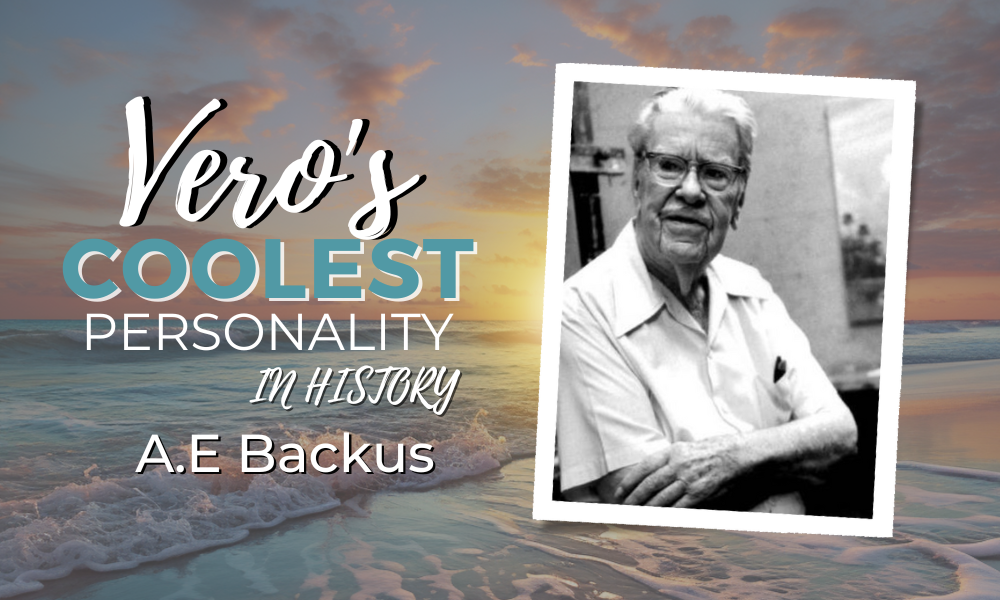
Albert Ernest “Beanie” Backus was not just a prominent figure in the Florida art scene; he was a cornerstone of its cultural heritage. Born in 1906 in Fort Pierce, Florida, Backus, affectionately known as “Beanie,” became known for his realistic and vibrant depictions of Florida’s landscapes, a talent that earned him the title of the “dean” of Florida landscape art. His naturalist’s eye for detail and his masterful use of light and color allowed him to capture the essence of Florida’s scenery with exceptional skill and precision.
Backus’s journey into the art world began early, supported by his parents who nurtured his interest in painting from a young age. A quirky childhood nickname, “Beanie,” stuck due to his fondness for beans. Dropping out of high school just before graduation in 1924, he worked to raise money for formal training at the Parsons School of Design in New York. This was the extent of his formal education in art, which laid the foundational skills he would later refine back in Florida.
Upon returning to Fort Pierce, Backus initially found work as a commercial artist, creating murals for restaurants, backdrops for theaters, and promotional materials for developers. However, the collapse of Florida’s first real estate bubble soon after left him jobless. Resilient in the face of economic adversity, Backus began selling his paintings at art shows across the state, often for as little as $5 each. His big break came in 1931 when local patron Dorothy Binney Palmer sponsored a one-man exhibition of his work, catapulting him to national attention.
His art gained further recognition in 1939 when one of his pieces was selected to represent Florida in a prestigious national exhibition in San Francisco, followed by winning the top honor from the Florida Federation of Arts. World War II took him across the globe as a quartermaster in the U.S. Navy, where he continued to paint, drawing inspiration from the exotic landscapes of Tahiti, Bora Bora, and other ports of call.
--> Join the conversation in Vero Beach Foodie and 46,600 very active members right now! <--
--> Subscribe to our weekly email and discover all the local events and happenings around the town. Join 26,650 of your neighbors right now! <--
Post-war, Backus became a staple at major Florida art showcases like the Fairchild Tropical Gardens Art Show in Miami. Despite a demanding schedule, he remained committed to the community, offering free art lessons and mentoring aspiring artists, including Alfred Hair and Harold Newton, who were part of the group later known as “The Highwaymen.” This group of African American artists, heavily influenced by Backus’s techniques, would go on to achieve recognition in their own right.
The 1950s brought personal tragedy with the death of his wife, Patricia, which led him to seek solace in the Caribbean. Jamaica, in particular, inspired a series of paintings that were warmly received back in Florida. In 1960, the A.E. Backus Gallery and Museum was established near his studio, securing his legacy and providing a home for the largest collection of his works.
Throughout his career, Backus completed an estimated 5,000 paintings, influencing countless artists and becoming synonymous with Florida’s picturesque outdoors. His legacy endures not just through his paintings but also through his profound impact on the art community, particularly through his support and mentorship of the Highwaymen, ensuring that the beauty he saw in Florida continues to be celebrated and preserved.
- Time is Running Out—French Moderns: Monet to Matisse, 1850–1950 Exhibition at the Vero Beach Museum of Art, only through June 22 - May 30, 2025
- Celebrate National Get Outdoors Day and Father’s Day Weekend with Free Admission at the Environmental Learning Center - May 30, 2025
- Top 9 Late Night Foodie Spots in Indian River County - May 28, 2025

